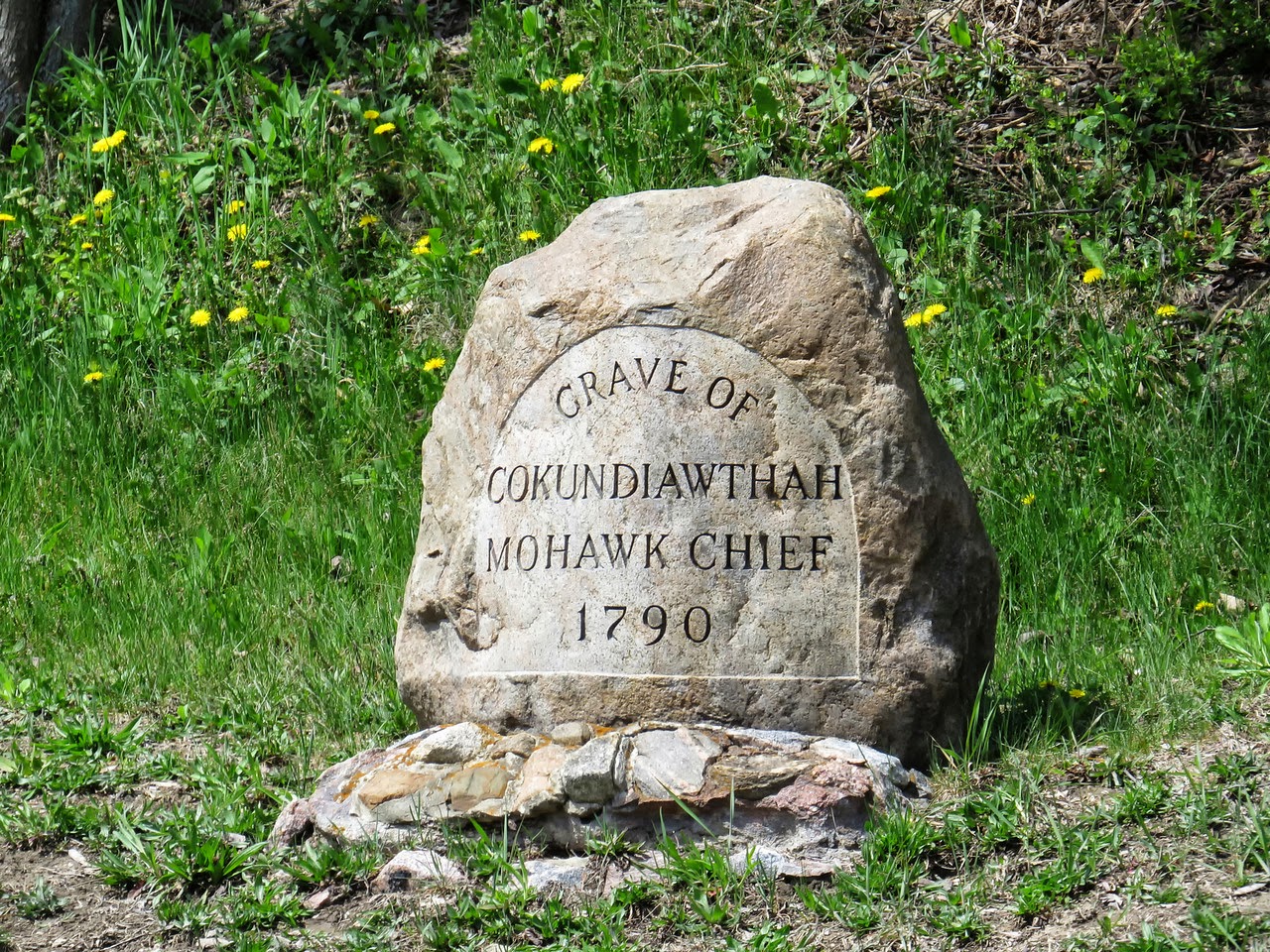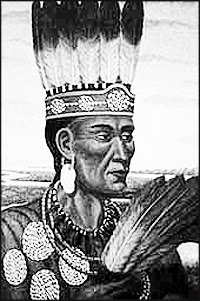George Washington Wees
June 23 1829, August 8 1897
George and Clementine Jane Godby Wees graves in Mt Hope, WVA
Clementine Jane Godby Wees
June 18 1833, August 16 1914
George and Clementine Wees are important in my research into the family history. I was told that my Great Grandmother Sarah Jane Wees was Cherokee. Well here are the parents of Sarah Jane Wees. George and Clementine are my 2nd Great Grandparents on the Cheek side. They were not Indian! One possible explanation for the Indian story is that the Wees family may have originally been of Jewish Origin.. The Weese line goes back to Franz Weiss born 1705 in Muhihofen, Palantine, Germany. Weiss is a well known Jewish name. I think it means White in German. Maybe the Wees family invented the Cherokee story to hide their Jewishness, I don't know.. I did read a story that before WW2 a Weese family member got a letter from a lawyer in Germany saying that he had inherited land in Germany and needed to go to Germany to claim it.. He wisely didn't go! If there is Jewish DNA in the Wees tree I didn't inherit much of it. Less than 1% Ashkenazi I am..
George was an interesting fellow. At the outbreak of the War of Northern Aggression. George enlisted in Hounshells Battallion, Thurmonds company of Partisan Cavalry Rangers. They were sort of an unofficial, official branch of The 51st Virginia cavalry.
| Fayette Rangers - Captain Philip Thurmond- June 1861
Captain Philip Thurmond Partisan Ranger Company - May 2, 1862
Captain William Thurmond Partisan Ranger Company- Sept.19, 1862 |
|||||||||||||||||||||||||||||||||||||||||||||||||||||||||||||||||||||||||||||||||||||||||||||||||||||||||||||||||||||||||||||||||||||||||||||||||||||||||||||||||||||||||||||||||||||||||||||||||||||
| The Fayette Rangers mustered
at St. Albans with First Kanawha and was led by Col. William Tyree
until his election as captain of the Mountain Cove Guard, June 6, 1861.
Philip Thurmond then became captain of the Fayette Rangers, attached Co
L, 51st. Va, 3rd Regt. Philip J. Thurmond was born Oct. 24, 1826 and was killed in battle at Winfield on Oct. 26, 1864. Older brother William D. Thurmond was born Dec. 11, 1820. After the war, Bill founded the town of Thurmond, and he died May 14, 1910. (Royal Arch) Assigned as Company L, Third Regiment, by General Floyd. |
|||||||||||||||||||||||||||||||||||||||||||||||||||||||||||||||||||||||||||||||||||||||||||||||||||||||||||||||||||||||||||||||||||||||||||||||||||||||||||||||||||||||||||||||||||||||||||||||||||||
| William D. Thurmond Not Forgotten |
|||||||||||||||||||||||||||||||||||||||||||||||||||||||||||||||||||||||||||||||||||||||||||||||||||||||||||||||||||||||||||||||||||||||||||||||||||||||||||||||||||||||||||||||||||||||||||||||||||||
| Thurmond's Partisan Ranger Battalion consisted of Philip Thurmond's Company which guarded routes from Fayetteville to Union via Princeton, and William Thurmond's Company which scouted along the New River from Gauley Ferry to Dogwood Gap. The inaccessibility of the New River Gorge left this area to the mercy of bushwackers and guerrillas. The two companies of Thurmond's Rangers were recruited from Fayette, Raleigh, and Summers counties throughout the gorge. And also..... | |||||||||||||||||||||||||||||||||||||||||||||||||||||||||||||||||||||||||||||||||||||||||||||||||||||||||||||||||||||||||||||||||||||||||||||||||||||||||||||||||||||||||||||||||||||||||||||||||||||
|
Amick's Partisan Rangers,
Independent Company of Scouts, guarded Mountain Cove District, Sewell
Mountain District, and the Wilderness District. At the death of Big
John Amick, John J. Halstead commanded the Nicholas County party of scouts. Samuel Tyree, his father Francis Tyree police captain of Sewell Police District, joined his uncle William's Mountain Cove Guard.
Samuel Tyree was also an original member of the Fayette Rangers. Was
on scout by order of General John S Williams in 1862, and authorized to
raise a company of rangers in 1863 as captain. This company was
associated with First Battalion,
but was kept constantly independent (Echols) during the whole war.
Tyree's, Halstead's and Amick's frequently rode with Captains Bill and
Phil Thurmond. Gen. Chapman recommended to Sec. of War Seddon that Thurmond's and Tyree's partisan ranger companies form a battalion. Maj. Genl Sam Jones endorsed and on October 29, 1863 Seddon designated them 44th Virginia Cavalry Battalion, however, the number was never mentioned again. October 7, 1864, Lt Col. Vincent "Clawhammer" Witcher recommended, "William and Philip Thurmond's companies, with Bumgard's and Amick's, about 300 strong..... are without organization, but I have placed Captain Philip Thurmond in command of them, and would respectfully suggest that they be organized into a battalion, and that he be prompted to a major." However, Philip Thurmond was killed in battle on October 26th and the battalion did not form. Several other companies formed by 1864, for a total of eleven companies. John W. Amick was given command of a Independent Battalion by 1865. The combined Ranger companies would brigade with Colonel Vincent A. Witcher's 34th Battalion Virginia Cavalry and have regimental strength for battle, and with about 600 men, sought regimental recognition from Richmond in November 1864. Hounshell's Battalion was organized from Hounshell's Rangers, along with Thurmond's Battalion and Z. T. Morris Battalion. Hounshell was placed in command of the department when General Echols left with the army for Richmond and General Lee. Captain Z. T. Morris temporarily replaced Hounshell in command of the battalion, and in February 1865, Captain William D. Thurmond took command of Hounshell's Partisan Rangers. Captain John Walker Amick then took command of the Independent battalion, formerly of Z. T. Morris. |
|||||||||||||||||||||||||||||||||||||||||||||||||||||||||||||||||||||||||||||||||||||||||||||||||||||||||||||||||||||||||||||||||||||||||||||||||||||||||||||||||||||||||||||||||||||||||||||||||||||
| Hounshell's Battalion Partisan Rangers Virginia Cavalry Col. David Hounshell, then Capt. Z. T. Morris, then Capt. W. Thurmond in Feb. 1865. |
|||||||||||||||||||||||||||||||||||||||||||||||||||||||||||||||||||||||||||||||||||||||||||||||||||||||||||||||||||||||||||||||||||||||||||||||||||||||||||||||||||||||||||||||||||||||||||||||||||||
|
"Thurmond's Battalion
" William Thurmond's Company- Capt. William D. Thurmond Company B- Capt. John D. Thurmond Capt. W.D. Huffman's Company (P. Thurmond Fayette Rangers) Capt. Robert. B. Gwinn's Company (from P. Thurmond Co.) Capt. P.W. Snider's Company (Thurmond) Capt. C. A. Hawvel's Company (Thurmond) "Amick's Independent Battalion" Capt. John James Halstead's Company ("Big John" Amick scouts) Capt. James. M. Bumgarner's Company. (Kanawha Scouts) Capt. Samuel Tyree's Company (Ranger Co. 22nd & Police District ) Company A- Capt. John W. Amick ("Little John")
-------------------------------------------------------------------------------------------------
Fayette County Virginia, WVAWas firmly confederate land in the early stages of the Civil War.. George Wees and his Thurmonds company of partison rangers participated in many battles and skirmishes along with the 51st Virginia against the Northern Aggressors.. Notable among these was the Battle of Fayetteville Sept 9-11 1862The Confederate loss at the Battle of Fayetteville was sixteen killed upon the field and thirty-two wounded.81 The Federal loss in the battle and during the entire four days while retreating down the valley, was twenty-five killed, ninety-five wounded, and one hundred ninety missing.. After the battle of Fayetteville the Federals retreated all the way to Point Pleasant...
So when you hear that WVA sided with the North in the Civil War, I say Bullshit.. There is much more to the story. Our ancestors fought against the Yankees in every way they could..
The following article, by correspondent "D" of the Second
Virginia Cavalry, entitled "Fayetteville in War Time, 1862,"
appeared in the Ironton (Ohio) Register on December 18,
1862:When I last wrote we were domiciled at Gauley, probably the most God forsaken country on this green earth. Now we are quartered in and near the village of Fayetteville, the shire town of Fayette County. It is a beautiful location; part of the village is on high ground with here and there small houses in the valley. From all appearances, before the war, the villagers really lived at home and had their respective places of residence surrounded with beautiful trees and shrubs of every kind. The village before the arrival of our boys was almost entirely de-populated having only one family living in it. Most of the buildings were much mutilated by the soldiers leaving only two or three houses untouched, one of which is a new and spacious brick were General Scammon is now quartered with his staff, and other high officials. Another house when we arrived here was used as a rebel hospital; now it is used by our forces as a hospital. | Company C- Capt. Joseph A. McClung | ||||||||||||||||||||||||||||||||||||||||||||||||||||||||||||||||||||||||||||||||||||||||||||||||||||||||||||||||||||||||||||||||||||||||||||||||||||||||||||||||||||||||||||||||||||||||||||||||||||












